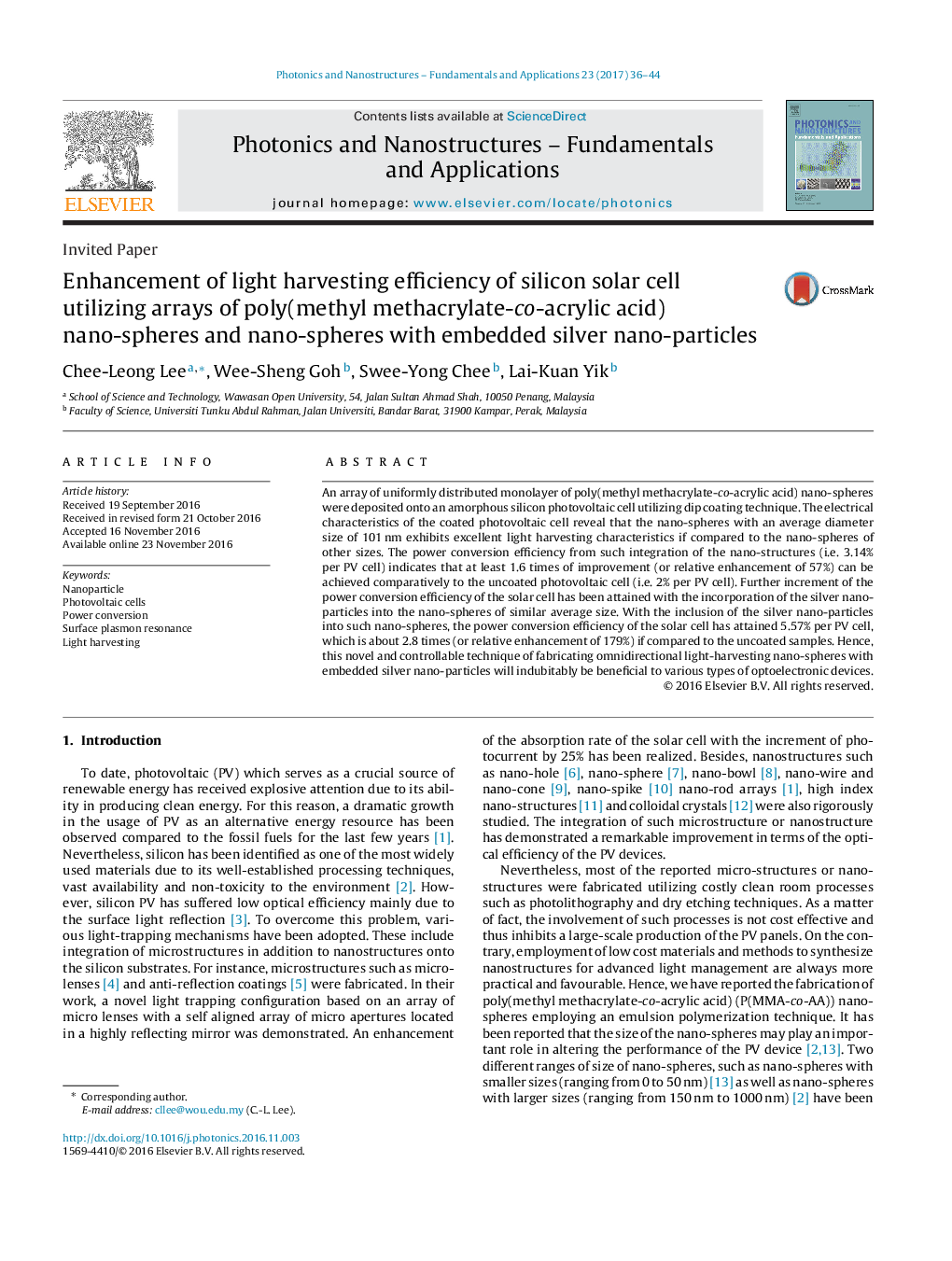| Article ID | Journal | Published Year | Pages | File Type |
|---|---|---|---|---|
| 5449896 | Photonics and Nanostructures - Fundamentals and Applications | 2017 | 9 Pages |
Abstract
An array of uniformly distributed monolayer of poly(methyl methacrylate-co-acrylic acid) nano-spheres were deposited onto an amorphous silicon photovoltaic cell utilizing dip coating technique. The electrical characteristics of the coated photovoltaic cell reveal that the nano-spheres with an average diameter size of 101Â nm exhibits excellent light harvesting characteristics if compared to the nano-spheres of other sizes. The power conversion efficiency from such integration of the nano-structures (i.e. 3.14% per PV cell) indicates that at least 1.6 times of improvement (or relative enhancement of 57%) can be achieved comparatively to the uncoated photovoltaic cell (i.e. 2% per PV cell). Further increment of the power conversion efficiency of the solar cell has been attained with the incorporation of the silver nano-particles into the nano-spheres of similar average size. With the inclusion of the silver nano-particles into such nano-spheres, the power conversion efficiency of the solar cell has attained 5.57% per PV cell, which is about 2.8 times (or relative enhancement of 179%) if compared to the uncoated samples. Hence, this novel and controllable technique of fabricating omnidirectional light-harvesting nano-spheres with embedded silver nano-particles will indubitably be beneficial to various types of optoelectronic devices.
Related Topics
Physical Sciences and Engineering
Materials Science
Electronic, Optical and Magnetic Materials
Authors
Chee-Leong Lee, Wee-Sheng Goh, Swee-Yong Chee, Lai-Kuan Yik,
